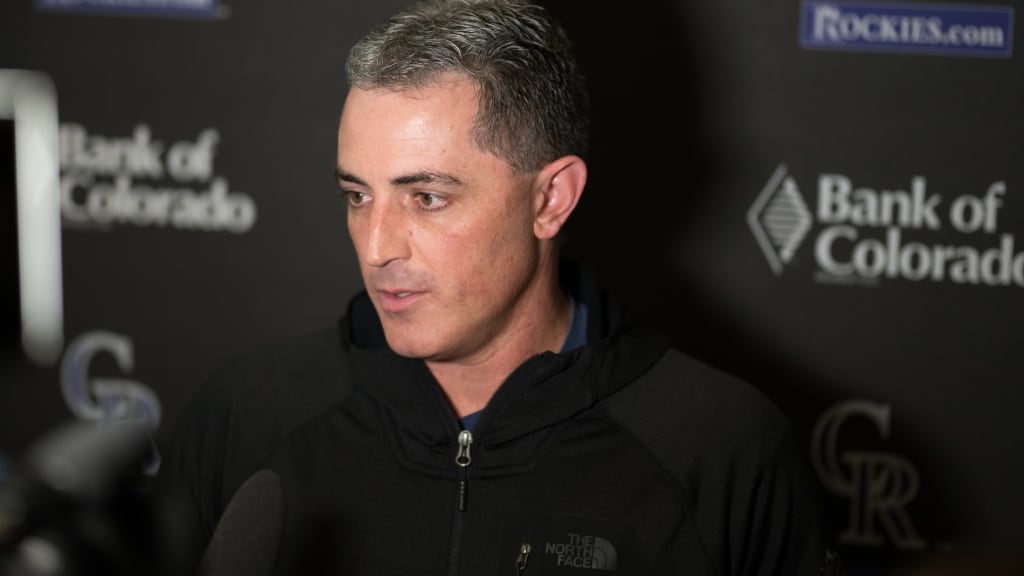
DENVER -- Even with the playoffs still a possibility, star third baseman Nolan Arenado sounded the alarm on Sept. 15.
¡°Eight [National League] teams make the playoffs,¡± said Arenado, a favorite for his eighth Gold Glove Award in as many seasons. ¡°And if we're not one of those eight teams, that's not a very good sign.¡±
Now, after finishing the last two seasons with respective winning percentages of .438 and .433, what will the Rockies do to find their way back to where they finished in 2017 and '18 -- the postseason? This is a team with a strong central core (Arenado, shortstop Trevor Story and outfielder Charlie Blackmon), and for three of the last four seasons, the starting pitching has been competitive. Yet, there has been more talk and potential than action and results.
Story was asked whether his promising 2020, with 11 home runs and 15 stolen bases, would have translated to something like 30-30 over a full season. Story¡¯s answer could be applied to his team after two straight losing seasons.
¡°Until you actually see the numbers on paper, then I don't think you ever feel like you did it,¡± Story said.
General manager Jeff Bridich and owner Dick Monfort, who is involved in baseball decisions on a granular level, are left to assess where the Rockies establish a clear direction and make impactful moves. The acquisition of pitcher Germán Márquez from the Rays in January 2016 has been the best offseason move under current management, but others have not paid off in production.
Let¡¯s look ahead to five questions that will dominate the months between now and the 2021 season:
1) What's the status of the Arenado-Bridich saga that arose last winter?
Arenado is due $199 million through 2026, his age-35 season, although he can opt out of the contract after next season. He also has a full no-trade clause.
That¡¯s a lot of time, a lot of money and -- especially with the COVID-19 pandemic¡¯s impact on revenue -- a lot of power. Last winter, Arenado vocalized his unhappiness with Bridich, who has declined to respond publicly.
Should the Rockies trade Arenado, they likely will be forced to take on multiple expensive contracts or send money to offset Arenado¡¯s salary. But the Rockies spent 2020 parting with high-salary, low-impact players.
This is where the rebuilding/retooling question comes to the forefront.
Will they seek to deal Story, who will make $18.5 million next season before hitting free agency? The Rockies are more likely to hold on to pitchers who will remain under club control, like lefty Kyle Freeland and righties Jon Gray and Antonio Senzatela. Moves involving free agents could affect whether the Rockies will listen to offers centering on arbitration-eligible outfielders David Dahl and Raimel Tapia.
If there is a bold trade, will it be for an immediate retool or for prospects still a few years away?
2) How do the Rockies approach their free agents?
The key question involves outfielder Kevin Pillar, who performed well after being acquired from the Red Sox at the Trade Deadline. Last offseason, Boston signed him for $4.25 million.
Veteran Matt Kemp expressed interest in a return, but that would largely depend on the designated hitter remaining in the NL. Other free agents include catcher Drew Butera, utility man Chris Owings and righty reliever AJ Ramos.
The Rockies will pay options and say goodbye to first baseman Daniel Murphy and relief pitcher Wade Davis, whose 43 saves in 2018 keyed a postseason run.
3) How much money is there for free agents, after a year of no revenue from fans in the ballpark?
Last offseason consisted of the Rockies claiming righty reliever Tyler Kinley off waivers from Miami; signing reliever José Mujica, who had not made the Majors with Tampa Bay; and signing players such as Butera, Owings, reliever Daniel Bard and catcher Elias Díaz to Minor League contracts.
The expiration of the big contracts could help, as could a new multiyear television contract with AT&T Sports Networks.
4) Can the answer be retooling the bullpen?
Manager Bud Black¡¯s strategic use of the bullpen -- when there are enough options -- and Bridich¡¯s eye for Trade Deadline deals were key to postseason runs in 2017 and ¡¯18. The Rockies showed in those seasons that strong starters and a dependable bullpen can make up even for their offense, which often went missing despite the star power.
The bullpen lagged this year because of injuries to Scott Oberg (blood clots) and Davis (right shoulder), and the ups and downs of homegrown relievers. Left-handed performance was so poor that the Rockies finished the year without a lefty reliever. The NL West teams that finished ahead of them -- the Dodgers, Padres and Giants -- had multiple lefty bullpen options.
The Rockies will need a healthy return of Oberg, expected quality from Trade Deadline acquisition Mychal Givens, and the continuation of Bard¡¯s strong comeback after eight years out of the Majors. Relievers who received a chance (Yency Almonte, Jairo Díaz, Carlos Estévez, Jeff Hoffman and Kinley) had their moments. But the situation screams for additions who are potent or experienced -- preferably both.
5) Will the Rockies score with their offseason choices?
The Rockies didn¡¯t retain DJ LeMahieu after 2018 and counted on Ryan McMahon, Garrett Hampson and Brendan Rodgers to step up. But LeMahieu signed with the Yankees for two years and $24 million, while his replacements have yet to meet expectations.
That same offseason, the Rockies signed Murphy to two years and $24 million -- this coming a few years after they reached a $70 million, five-year deal (that expires after next season) for Ian Desmond, which has netted more leadership than production.
Acquiring M¨¢rquez and the good year from Davis were a while ago. The next decisions are crucial for whichever direction the club chooses.

